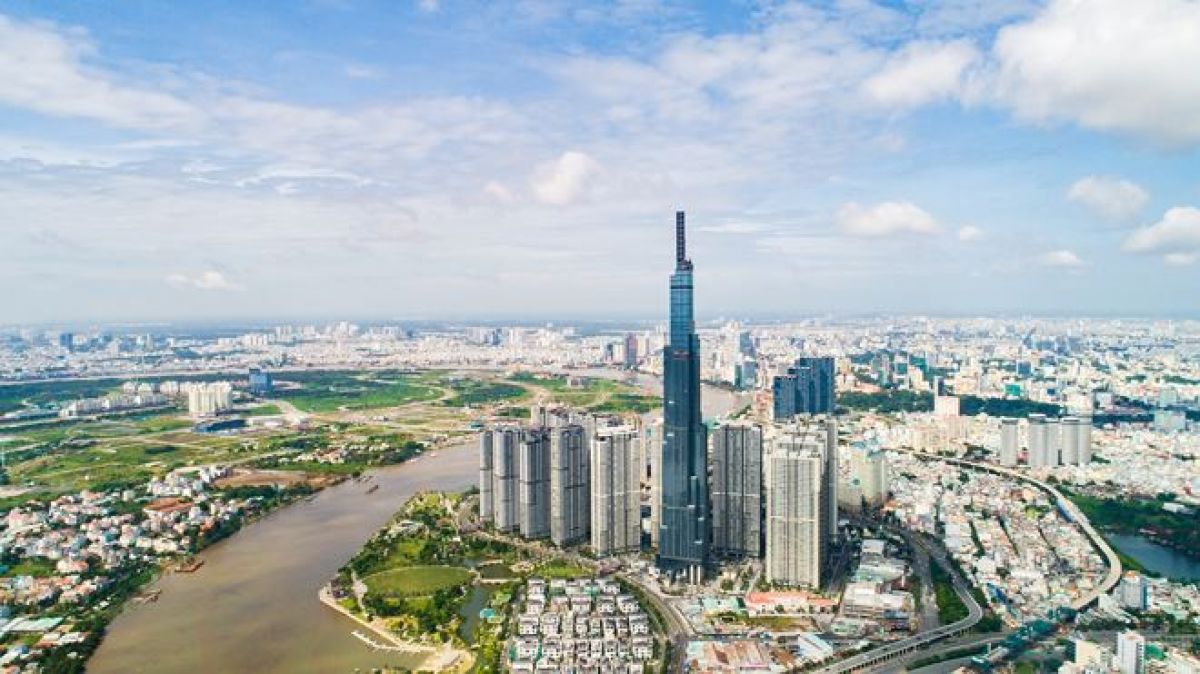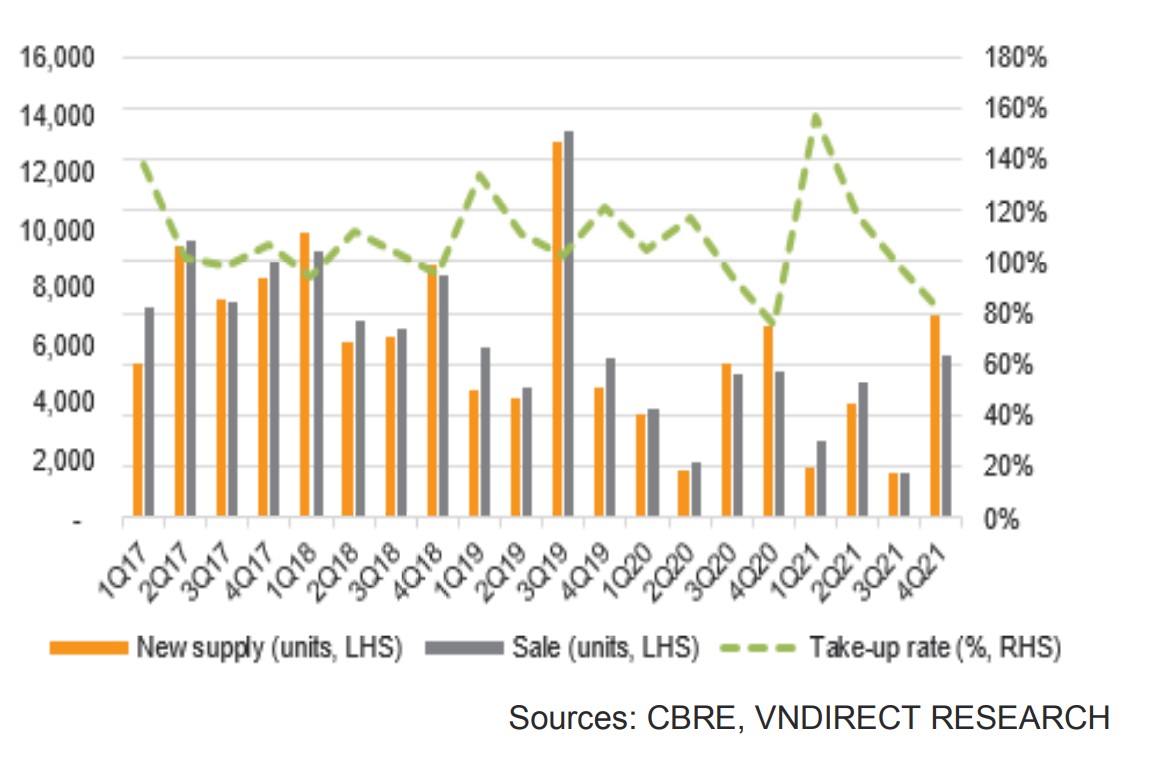A supply and demand mismatch in Hanoi and HCM city's property market
The real estate market in Vietnam's major cities is exhibiting signs of a supply-demand mismatch, in which housing prices are high but supply in the lower-priced housing segments is scarce.

The total number of projects put on the HCM city property market declined by more than 35 percent in 2021 compared to 2020
Housing supply in Hanoi fell 19 percent in 2021 compared to the previous year, according to Savills, the lowest in the prior five years. The inexpensive housing market, in particular, is becoming increasingly scarce, with no new supply of units priced below 20 million VND per square meter on the horizon.
Meanwhile, in Ho Chi Minh City, the total number of projects put on the market declined by more than 35 percent in 2021 compared to 2020, and the total number of residences decreased by more than 14 percent. There is also a noticeable mismatch in terms of product structure, with the inexpensive apartment segment accounting for 0%, the mid-end segment for 26%, and the luxury apartment segment accounting for 74%.
According to Savills' analysts, the above discrepancy is attributable to the fact that home supply is becoming increasingly limit ed as legal procedures take longer to complete. Aside from that, changes in Vietnam's urban population structure are driving new housing market demands. However, there is currently an imbalance in the low-priced apartment market.
The aforementioned pattern indicates that the real estate market is in a state of flux, with numerous hazards, including increased speculation in buying and selling, harmed urban development goals, and lower housing area per capita. As a result, it is vital to alter the strategy in order to quickly regulate supply in the future, ensuring that the market grows steadily.

Slightly recovery in HCMC new condo supply in 4Q21
Mr. Nguyen Hoang, Director of Research & Development (R&D) DKRA Vietnam, said: "The apartment categorization rate is still unstable. There is a scarcity of inexpensive flats, Grade A and luxury apartments continue to account for a major proportion. It is necessary to rearrange urban space and housing for low-income people as a result of the COVID-19 outbreak."
According to many experts, the high selling price has made it difficult for many consumers to find real estate items in the desired regions while staying within their budgetary constraints. People with serious housing demands and those with an average accumulated income make up the majority of this category. As a result, in order for the real estate market to remain balanced, the sector of inexpensive apartments, which represents the bulk of customers, must maintain a high rate of growth, followed by the mid-end apartment segment and the high-end apartment segment.
Along with changing the apartment segment's structure, the legal system governing residential real estate must be updated and supplemented to keep up with market changes, particularly the emergence of new types of real estate. The legal procedure should be simplified, allowing firms to remove procedural barriers and quickly finalize the legality of a property project.
Furthermore, the epidemic has been brought under control, and the socioeconomic situation is gradually reverting to its previous state. This is also good news for Ho Chi Minh City and the surrounding regions, where land is scarce.
According to DKRA Vietnam's estimate, with the major position from the surrounding areas, the new supply and demand of the land plot segment in this area in 2022 may recover and increase compared to 2021.








